so- is this midge?
enchantedrosez5bma
6 years ago
Featured Answer
Sort by:Oldest
Comments (46)
Patty W. zone 5a Illinois
6 years agolast modified: 6 years agoenchantedrosez5bma
6 years agoRelated Discussions
Organic Treatment for Rose Midge?
Comments (23)Hi Sam: Your setting doesn't allow e-mail, so I exchange info. here. Thank you for posting "Environmental reasons for NOT spraying .." in the other forum. In that thread, MichaelG accused Kimmsr of "being divisive and argumentative". I googled threads dating way back in Organic Rose, and found THAT'S NOT TRUE. Years ago, MichaelG accused me of being a "troll" and "fictitious character" ... then later apologized. There are Bayer-corporate promoters who do anything to shoot down organic posters. If you hang around in regular forums long enough, you'll find that the old-timers will put anyone who do things differently "on trial". The corporate sleuths are very aggressive, they even come into Organic rose to recommend Bayer spraying and chemicals to newbies. That's why I post in Organic rose to defend the guidelines that Gardenweb established for this forum....See MoreEnjoying October
Comments (8)How lovely. Is that an aster in the background? I agree with you on the cooler temp. colors, they are richer this time of year. I never could make a good go of Scentimentel but yours is beautiful! Thanks for the photos. Carla...See MoreDyna-gro Pro-tek or Maxicrop for rose midge?
Comments (36)Dave- I haven't used it yet. CoriAnn uses it. I'll ask her. I'll let everyone know if I see any improvement to anthracnose after I foliar spray since I don't have much blackspot. I'll also see if it helps with aphids since I have these too. Patty- funny in a not funny, haha, way! I think "ironic" might be the better word. Is anthracnose as bad a disease as black spot? My roses look awful but they still have their leaves unlike with bs. And some of the Kordes are fine as is Julia and my DA Windermere and Queen of Sweden. I'm still learning. Since it doesn't cause complete defoliation I'm thinking (hoping) it might be the lesser of two evils. I haven't sprayed yet, partly out of laziness but mostly out of concern for the environment. So many of these products are harmful to aquatic life. Our property abuts a designated swamp. I'd hate to cause damage to the eco-system there. My hydrangeas and hostas look fine so it doesn't seem as bad as yours. I'll let you know when I use the Pro-tekt. With luck it just might do what it says it does. Wouldn't that be great :-) Kelp4Less has silica powder available for hydroponics. According to the info it has recently been approved asa plant nutrient recognized by science. It's helpful for those who especially grow in raised beds or pots which CoriAnn does. I have bought from Kelp4Less. They're a bit pricy but have great service and organic products. The video is a bit long but here's the link if anyone is interested- https://www.youtube.com/watch?v=YB5pBCdnMTE Dave- it seems according to the Kelp4Less is used as a drench not a foliar spray. It might be because they are geared more to hydroponics though. Their's is neutral ph. There are 9 reviews by buyers that say they see improvement in stem strength, leaf strength and disease resistance. I don't think CoriAnn gets much disease in CA where she gardens but she does get extreme heat and uses Pro-tekt for heat and drought stress. Sharon...See MoreRose midge is back
Comments (10)Patty, Mention midge to me, and my blood begins to boil. What a persistent, devastating plague it is. I know what you are experiencing. My best solution is spray.....which I hate to do, but if I didn't, after my spring flush, I would not have a single bloom until next spring. My study on rose midge fly indicates the female midge follows a scent trail emitted by a rose's growing tip to find it. After the tip has reached the state of growth where the bud (buds for cluster bloomers), has reached the size of a garden pea, the female midge fly leaves that tip alone. Her maggots require the tenderest, newest growth to feast upon. If a scientist came up with a synthesized rose tip scent applied to artificial rose growing tip lures placed throughout a rose bed, that could cause the females to lay their eggs on them where the emerging maggots would simply expire from starvation. Timing the scent trap rose tips to be activated at all times, and particularly when the roses were in full bloom cycles (few vulnerable tips available then, not producing abundant new growth), further luring the females toward the artificial lure tips, the midge fly population should drop considerably. Anyway, it's a thought. Moses...See MoreStreisand Fan
6 years agoenchantedrosez5bma
6 years agolast modified: 6 years agoPatty W. zone 5a Illinois
6 years agoenchantedrosez5bma
6 years agolast modified: 6 years agoenchantedrosez5bma
6 years agoMoses, Pittsburgh, W. PA., zone 5/6, USA
6 years agolast modified: 6 years agoenchantedrosez5bma thanked Moses, Pittsburgh, W. PA., zone 5/6, USAMoses, Pittsburgh, W. PA., zone 5/6, USA
6 years agolast modified: 6 years agoVaporvac Z6-OhioRiverValley
6 years agolast modified: 6 years agoenchantedrosez5bma thanked Vaporvac Z6-OhioRiverValleyac91z6
6 years agoVaporvac Z6-OhioRiverValley
6 years agoac91z6
6 years agoenchantedrosez5bma
6 years agoMoses, Pittsburgh, W. PA., zone 5/6, USA
6 years agolast modified: 6 years agoenchantedrosez5bma
6 years agoMoses, Pittsburgh, W. PA., zone 5/6, USA
6 years agoenchantedrosez5bma thanked Moses, Pittsburgh, W. PA., zone 5/6, USAjim1961 / Central Pennsylvania / Zone 6
6 years agolast modified: 6 years agoMoses, Pittsburgh, W. PA., zone 5/6, USA
6 years agolast modified: 6 years agoenchantedrosez5bma
6 years agolast modified: 6 years agoenchantedrosez5bma
6 years agolast modified: 6 years agoVaporvac Z6-OhioRiverValley
6 years agoenchantedrosez5bma
6 years agolast modified: 6 years agoenchantedrosez5bma
6 years agojim1961 / Central Pennsylvania / Zone 6
6 years agolast modified: 6 years agoVaporvac Z6-OhioRiverValley
6 years agolast modified: 6 years agoMoses, Pittsburgh, W. PA., zone 5/6, USA
6 years agoenchantedrosez5bma
6 years agojim1961 / Central Pennsylvania / Zone 6
6 years agojim1961 / Central Pennsylvania / Zone 6
6 years agoenchantedrosez5bma thanked jim1961 / Central Pennsylvania / Zone 6enchantedrosez5bma
6 years agoac91z6
6 years agoenchantedrosez5bma
6 years agolast modified: 6 years agoVaporvac Z6-OhioRiverValley
6 years agoac91z6
6 years agolast modified: 6 years agoUser
6 years agolast modified: 6 years agoenchantedrosez5bma
6 years agoac91z6
6 years agoenchantedrosez5bma
6 years ago
Related Stories

ARCHITECTUREDesign Pop: How Do You Remodel a Castle?
With all eyes on Windsor Castle for the recent wedding of Harry and Meghan, we got to thinking about regal renovations
Full Story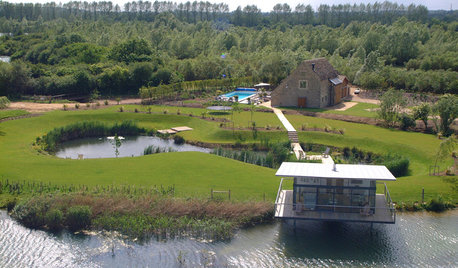
MODERN ARCHITECTUREHouzz Tour: Creative Thinking Yields a Lakefront 'Living Room'
Careful planning leads to a new structure and location for a stellar view
Full Story
HOUZZ CALLTell Us About the People You Want to Thank This Year
Please share stories of those who have given you kind words or done deeds that helped you through 2017
Full Story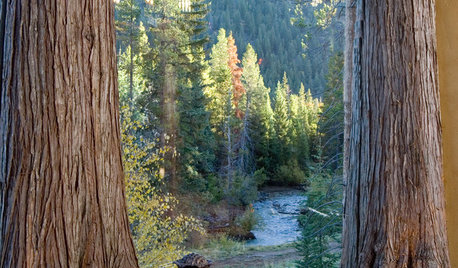
REMODELING GUIDES9 Creative Window Designs for All Kinds of Spaces
When standard windows just won't cut it, these innovative options are a breath of fresh design air
Full Story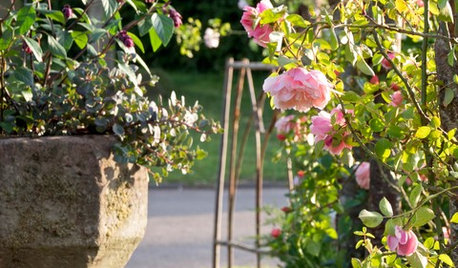
GARDENING GUIDESHow to Deadhead Roses and Other Garden Favorites
Follow this basic guide and learn how to properly deadhead roses and other flowers
Full StorySponsored
Zanesville's Most Skilled & Knowledgeable Home Improvement Specialists




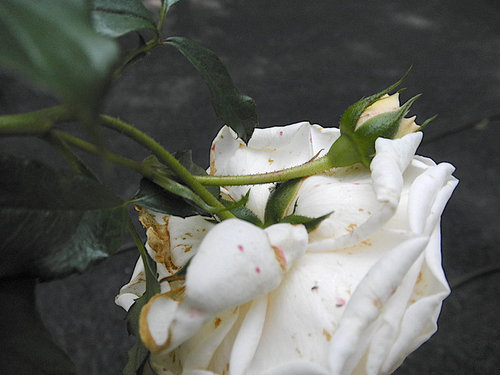



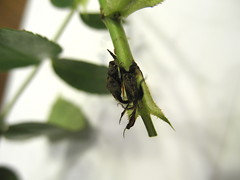
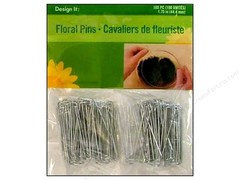

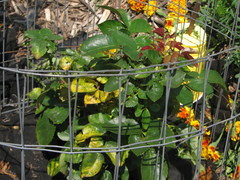





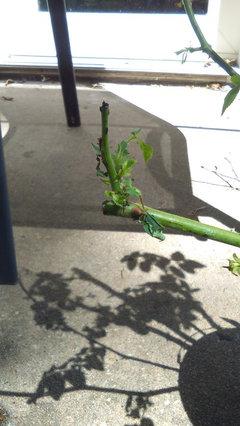


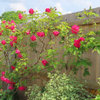


Moses, Pittsburgh, W. PA., zone 5/6, USA